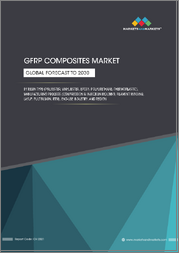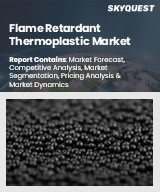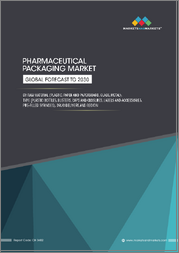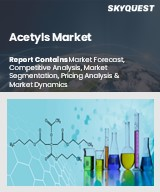
|
시장보고서
상품코드
1620686
플라스틱 시장 : 유형별, 공급원별, 용도별 - 세계 예측(2025-2030년)Plastic Market by Type (Thermoplastics, Thermosetting Plastics), Source (Bioplastics, Synthetic Plastics), Application - Global Forecast 2025-2030 |
||||||
플라스틱 시장은 2023년에 5,893억 1,000만 달러로 평가되었습니다. 2024년에는 6,197억 2,000만 달러에 도달할 것으로 예측되며, CAGR 5.27%로 성장하여 2030년에는 8,446억 6,000만 달러에 달할 전망입니다.
플라스틱 시장은 다양한 산업에서 사용되는 광범위한 재료를 포함하며, 가단성 합성 또는 반합성 화합물로 정의됩니다. 플라스틱의 필요성은 내구성, 경량성, 내식성 등 다양한 특성으로 인해 포장, 자동차, 의료, 전자제품, 건축 등 다양한 분야에서 활용되고 있습니다. 신흥국 수요 증가, 일회용 플라스틱 증가, 바이오플라스틱의 기술 혁신으로 시장이 확대되고 있습니다. 재활용 기술의 발전, 지속 가능한 소재에 대한 소비자의 인식 증가, 친환경 대체품을 장려하는 정부 규제 등이 성장을 가속하는 주요 요인으로 꼽힙니다. 그러나 환경 문제, 원자재 가격 변동, 기존 플라스틱에 대한 엄격한 규제 등은 시장 성장을 저해하는 요인으로 작용할 수 있습니다. 비즈니스 기회는 바이오플라스틱 개발, 재활용 기술, 환경의식이 높아지는 소비자층을 끌어들일 수 있는 순환 경제 모델에서 찾을 수 있습니다. 기업들은 생분해성 플라스틱, 첨단 재활용 공정, 탄소 배출량을 줄이는 고성능 소재 개발 등의 분야에서 혁신을 이룰 수 있습니다. 시장 개척 기업들은 지속가능성 추세를 인식하고 규제와 소비자의 기대에 부합하는 친환경 제품을 개발하기 위해 연구개발에 투자해야 합니다. 또한, 규제 기관과의 협력을 통해 지속 가능한 관행으로의 전환을 원활하게 진행할 수 있습니다. 시장 경쟁이 치열해지면서 기술 발전과 지속가능성을 통한 차별화가 가장 중요합니다. 유망한 전망에도 불구하고, 지속 가능한 인프라와 높은 초기 기술 도입 비용 등의 제약이 걸림돌이 될 수 있습니다. 또한, 지정학적 요인과 무역 규제로 인해 공급망에 혼란이 발생할 수도 있습니다. 기업은 이러한 위험을 줄이고 민첩성을 높이기 위해 파트너십과 합작 투자에 집중해야 합니다. 요컨대, 지속 가능한 관행의 혁신과 새로운 기술의 전략적 통합은 시장 환경의 변화 속에서 살아남기 위해 필수적입니다.
| 주요 시장 통계 | |
|---|---|
| 기준년(2023) | 5,893억 1,000만 달러 |
| 추정년(2024) | 6,197억 2,000만 달러 |
| 예측년(2030) | 8,446억 6,000만 달러 |
| CAGR(%) | 5.27% |
시장 역학: 빠르게 진화하는 플라스틱 시장의 주요 시장 인사이트 공개
플라스틱 시장은 수요 및 공급의 역동적인 상호작용에 의해 변화하고 있습니다. 이러한 시장 역학의 변화를 이해함으로써 기업은 정보에 입각한 투자 결정을 내리고, 전략적인 의사결정을 정교화하며, 새로운 비즈니스 기회를 포착할 수 있습니다. 이러한 트렌드를 종합적으로 파악함으로써 기업은 정치적, 지리적, 기술적, 사회적, 경제적 영역 전반에 걸친 다양한 리스크를 줄일 수 있으며, 소비자 행동과 그것이 제조 비용 및 구매 동향에 미치는 영향을 보다 명확하게 이해할 수 있습니다.
- 시장 성장 촉진요인
- 플라스틱 생산 기술 혁신
- 최종 사용 산업에서 수요 증가
- 특수 용도를 위한 맞춤형 플라스틱 솔루션 혁신
- 시장 성장 억제요인
- 원재료 가격 변동
- 시장 기회
- 재활용 및 지속 가능한 생산에 대한 투자 증가
- 바이오플라스틱 개발의 혁신
- 시장 과제
- 환경 영향에 대한 규제가 강화됨
Porter's Five Forces: 플라스틱 시장 공략을 위한 전략 도구
Porter's Five Forces 프레임워크는 시장 상황경쟁 구도를 이해하는 중요한 도구입니다. Porter의 Five Forces 프레임워크는 기업의 경쟁력을 평가하고 전략적 기회를 탐색할 수 있는 명확한 방법을 제공합니다. 이 프레임워크는 기업이 시장 내 세력도를 평가하고 신규 사업의 수익성을 판단하는 데 도움이 됩니다. 이러한 통찰력을 통해 기업은 강점을 활용하고, 약점을 해결하고, 잠재적인 도전을 피하고, 보다 강력한 시장 포지셔닝을 확보할 수 있습니다.
PESTLE 분석 : 플라스틱 시장의 외부 영향 파악
PESTLE 분석외부 거시 환경 요인은 플라스틱 시장의 성과 역학을 형성하는 데 매우 중요한 역할을 합니다. 정치적, 경제적, 사회적, 기술적, 법적, 환경적 요인에 대한 분석은 이러한 영향을 탐색하는 데 필요한 정보를 제공하며, PESTLE 요인을 조사함으로써 기업은 잠재적 위험과 기회를 더 잘 이해할 수 있습니다. 이러한 분석을 통해 기업은 규제, 소비자 선호도, 경제 동향의 변화를 예측하고 선제적이고 능동적인 의사결정을 내릴 준비를 할 수 있습니다.
시장 점유율 분석 플라스틱 시장에서경쟁 구도 파악
플라스틱 시장의 상세한 시장 점유율 분석을 통해 공급업체의 성과를 종합적으로 평가할 수 있습니다. 기업은 수익, 고객 기반, 성장률과 같은 주요 지표를 비교하여 경쟁적 위치를 파악할 수 있습니다. 이 분석은 시장의 집중화, 단편화 및 통합 추세를 파악할 수 있으며, 공급업체는 치열한 경쟁 속에서 자신의 입지를 강화할 수 있는 전략적 의사결정을 내리는 데 필요한 통찰력을 얻을 수 있습니다.
FPNV 포지셔닝 매트릭스 플라스틱 시장에서공급업체 성과 평가
FPNV 포지셔닝 매트릭스는 플라스틱 시장에서 공급업체를 평가하는 중요한 도구입니다. 이 매트릭스를 통해 비즈니스 조직은 벤더의 비즈니스 전략과 제품 만족도를 기반으로 평가하여 목표에 부합하는 정보에 입각한 의사결정을 내릴 수 있으며, 4개의 사분면으로 벤더를 명확하고 정확하게 세분화하여 전략 목표에 가장 적합한 파트너와 솔루션을 식별할 수 있습니다. 전략 목표에 가장 적합한 파트너와 솔루션을 식별할 수 있습니다.
전략 분석 및 추천 플라스틱 시장 성공의 길을 그립니다.
플라스틱 시장 전략 분석은 세계 시장에서 입지를 강화하고자 하는 기업에게 필수적입니다. 주요 자원, 역량 및 성과 지표를 검토함으로써 기업은 성장 기회를 식별하고 개선할 수 있습니다. 이러한 접근 방식을 통해 경쟁 환경의 도전을 극복하고 새로운 비즈니스 기회를 활용하여 장기적인 성공을 거둘 수 있도록 준비할 수 있습니다.
이 보고서는 주요 관심 분야를 포괄하는 시장에 대한 종합적인 분석을 제공합니다.
1. 시장 침투도 : 현재 시장 환경의 상세한 검토, 주요 기업의 광범위한 데이터, 시장 도달 범위 및 전반적인 영향력 평가.
2. 시장 개척도: 신흥 시장에서의 성장 기회를 파악하고, 기존 분야의 확장 가능성을 평가하며, 미래 성장을 위한 전략적 로드맵을 제공합니다.
3. 시장 다각화 : 최근 제품 출시, 미개척 지역, 업계의 주요 발전, 시장을 형성하는 전략적 투자를 분석합니다.
4. 경쟁 평가 및 정보 : 경쟁 구도를 철저히 분석하여 시장 점유율, 사업 전략, 제품 포트폴리오, 인증, 규제 당국의 승인, 특허 동향, 주요 기업의 기술 발전 등을 검토합니다.
5. 제품 개발 및 혁신 : 미래 시장 성장을 가속할 것으로 예상되는 첨단 기술, 연구 개발 활동 및 제품 혁신을 강조합니다.
이해관계자들이 충분한 정보를 바탕으로 의사결정을 내릴 수 있도록 다음과 같은 중요한 질문에 대한 답변도 제공합니다.
1. 현재 시장 규모와 향후 성장 전망은?
2. 최고의 투자 기회를 제공하는 제품, 부문, 지역은?
3. 시장을 형성하는 주요 기술 동향과 규제의 영향은?
4. 주요 벤더 시장 점유율과 경쟁 포지션은?
5.벤더 시장 진입 및 철수 전략의 원동력이 되는 수익원과 전략적 기회는 무엇인가?
목차
제1장 서문
제2장 조사 방법
제3장 주요 요약
제4장 시장 개요
제5장 시장 인사이트
- 시장 역학
- 성장 촉진요인
- 성장 억 제요인
- 기회
- 과제
- 시장 세분화 분석
- Porter's Five Forces 분석
- PESTEL 분석
- 정치적
- 경제적
- 사회적
- 기술적
- 법적
- 환경적
제6장 플라스틱 시장 : 유형별
- 열가소성 플라스틱
- 열경화성 플라스틱
제7장 플라스틱 시장 : 소스별
- 바이오플라스틱
- 합성 플라스틱
제8장 플라스틱 시장 : 용도별
- 농업
- 자동차
- 건축 및 건설
- 소비재
- 전기 및 전자
- 가구?침구
- 의료기기
- 패키지
제9장 아메리카의 플라스틱 시장
- 아르헨티나
- 브라질
- 캐나다
- 멕시코
- 미국
제10장 아시아태평양의 플라스틱 시장
- 호주
- 중국
- 인도
- 인도네시아
- 일본
- 말레이시아
- 필리핀
- 싱가포르
- 한국
- 대만
- 태국
- 베트남
제11장 유럽·중동 및 아프리카의 플라스틱 시장
- 덴마크
- 이집트
- 핀란드
- 프랑스
- 독일
- 이스라엘
- 이탈리아
- 네덜란드
- 나이지리아
- 노르웨이
- 폴란드
- 카타르
- 러시아
- 사우디아라비아
- 남아프리카공화국
- 스페인
- 스웨덴
- 스위스
- 터키
- 아랍에미리트(UAE)
- 영국
제12장 경쟁 구도
- 시장 점유율 분석, 2023
- FPNV 포지셔닝 매트릭스, 2023
- 경쟁 시나리오 분석
- 전략 분석과 제안
기업 목록
- APPL Industries Ltd.
- Astral Poly Technik
- Bajaj Plast Private Limited
- BASF SE
- Big Bags International Pvt Ltd.
- Celanese Corporation
- Chevron Phillips Chemical
- Covestro AG
- Dow Chemical Company
- DuPont de Nemours, Inc.
- Eastman Chemical Company
- Evonik Industries AG
- Formosa Plastics Corporation
- Haitian Precison Machinery Co., Ltd.
- INEOS
- LANXESS
- LG Chemicals
- LyondellBasell Industries NV
- Mitsui Chemicals
- Niskawa Technology Co., Ltd.
- Prima Plastics Limited
- Satyam Plastfab Pvt. Ltd.
- Toray Industries, Inc.
- VIP Plastics
The Plastic Market was valued at USD 589.31 billion in 2023, expected to reach USD 619.72 billion in 2024, and is projected to grow at a CAGR of 5.27%, to USD 844.66 billion by 2030.
The plastic market encompasses a broad spectrum of materials used across diverse industries, defined by synthetic or semisynthetic compounds that are malleable. The necessity of plastics stems from their versatile properties-such as durability, lightweight nature, and resistance to corrosion-facilitating applications in packaging, automotive, healthcare, electronics, and construction. The market is expanding due to increasing demand in emerging economies, the rise in single-use plastics, and innovations in bioplastics. Key factors driving growth include advancements in recycling technologies, heightened consumer awareness about sustainable materials, and government regulations pushing for environmentally friendly alternatives. However, the market faces challenges due to environmental concerns, fluctuating raw material prices, and stringent regulatory mandates on traditional plastics, which may hinder growth. Opportunities lie in bioplastic development, recycling technologies, and circular economy models which can tap into growing eco-conscious consumer bases. Companies can innovate in areas like biodegradable plastics, advanced recycling processes, and the development of high-performance materials to reduce carbon footprints. Market players must recognize the rising trend of sustainability and invest in R&D to develop eco-friendly products that align with regulatory and consumer expectations. Moreover, collaboration with regulatory bodies can facilitate smoother transitions to sustainable practices. As the market becomes increasingly competitive, differentiation through technological advancements and sustainability is paramount. Despite the promising landscape, limitations such as the high initial cost of sustainable infrastructure and technology adoption may pose hurdles. Additionally, geopolitical factors and trade regulations can create supply chain disruptions. Companies should focus on partnerships and joint ventures to mitigate these risks, boosting agility. In essence, innovation in sustainable practices and strategic integration of emerging technologies will be crucial to navigating the evolving landscape of the plastic market successfully.
KEY MARKET STATISTICS Base Year [2023] USD 589.31 billion Estimated Year [2024] USD 619.72 billion Forecast Year [2030] USD 844.66 billion CAGR (%) 5.27% Market Dynamics: Unveiling Key Market Insights in the Rapidly Evolving Plastic Market
The Plastic Market is undergoing transformative changes driven by a dynamic interplay of supply and demand factors. Understanding these evolving market dynamics prepares business organizations to make informed investment decisions, refine strategic decisions, and seize new opportunities. By gaining a comprehensive view of these trends, business organizations can mitigate various risks across political, geographic, technical, social, and economic domains while also gaining a clearer understanding of consumer behavior and its impact on manufacturing costs and purchasing trends.
- Market Drivers
- Innovation in plastic production technologies
- Rising demand from end-use industries
- Innovating custom plastic solutions for specialized applications
- Market Restraints
- Volatility of raw material price
- Market Opportunities
- Rising investment in recycling and sustainable production initiatives
- Innovation in bioplastics development
- Market Challenges
- Stringent regulatory scrutiny concerning environmental impact
Porter's Five Forces: A Strategic Tool for Navigating the Plastic Market
Porter's five forces framework is a critical tool for understanding the competitive landscape of the Plastic Market. It offers business organizations with a clear methodology for evaluating their competitive positioning and exploring strategic opportunities. This framework helps businesses assess the power dynamics within the market and determine the profitability of new ventures. With these insights, business organizations can leverage their strengths, address weaknesses, and avoid potential challenges, ensuring a more resilient market positioning.
PESTLE Analysis: Navigating External Influences in the Plastic Market
External macro-environmental factors play a pivotal role in shaping the performance dynamics of the Plastic Market. Political, Economic, Social, Technological, Legal, and Environmental factors analysis provides the necessary information to navigate these influences. By examining PESTLE factors, businesses can better understand potential risks and opportunities. This analysis enables business organizations to anticipate changes in regulations, consumer preferences, and economic trends, ensuring they are prepared to make proactive, forward-thinking decisions.
Market Share Analysis: Understanding the Competitive Landscape in the Plastic Market
A detailed market share analysis in the Plastic Market provides a comprehensive assessment of vendors' performance. Companies can identify their competitive positioning by comparing key metrics, including revenue, customer base, and growth rates. This analysis highlights market concentration, fragmentation, and trends in consolidation, offering vendors the insights required to make strategic decisions that enhance their position in an increasingly competitive landscape.
FPNV Positioning Matrix: Evaluating Vendors' Performance in the Plastic Market
The Forefront, Pathfinder, Niche, Vital (FPNV) Positioning Matrix is a critical tool for evaluating vendors within the Plastic Market. This matrix enables business organizations to make well-informed decisions that align with their goals by assessing vendors based on their business strategy and product satisfaction. The four quadrants provide a clear and precise segmentation of vendors, helping users identify the right partners and solutions that best fit their strategic objectives.
Strategy Analysis & Recommendation: Charting a Path to Success in the Plastic Market
A strategic analysis of the Plastic Market is essential for businesses looking to strengthen their global market presence. By reviewing key resources, capabilities, and performance indicators, business organizations can identify growth opportunities and work toward improvement. This approach helps businesses navigate challenges in the competitive landscape and ensures they are well-positioned to capitalize on newer opportunities and drive long-term success.
Key Company Profiles
The report delves into recent significant developments in the Plastic Market, highlighting leading vendors and their innovative profiles. These include APPL Industries Ltd., Astral Poly Technik, Bajaj Plast Private Limited, BASF SE, Big Bags International Pvt Ltd., Celanese Corporation, Chevron Phillips Chemical, Covestro AG, Dow Chemical Company, DuPont de Nemours, Inc., Eastman Chemical Company, Evonik Industries AG, Formosa Plastics Corporation, Haitian Precison Machinery Co., Ltd., INEOS, LANXESS, LG Chemicals, LyondellBasell Industries N.V., Mitsui Chemicals, Niskawa Technology Co., Ltd., Prima Plastics Limited, Satyam Plastfab Pvt. Ltd., Toray Industries, Inc., and VIP Plastics.
Market Segmentation & Coverage
This research report categorizes the Plastic Market to forecast the revenues and analyze trends in each of the following sub-markets:
- Based on Type, market is studied across Thermoplastics and Thermosetting Plastics.
- Based on Source, market is studied across Bioplastics and Synthetic Plastics.
- Based on Application, market is studied across Agriculture, Automotive, Building & Construction, Consumer Goods, Electrical & Electronics, Furniture & Bedding, Medical Devices, and Packaging.
- Based on Region, market is studied across Americas, Asia-Pacific, and Europe, Middle East & Africa. The Americas is further studied across Argentina, Brazil, Canada, Mexico, and United States. The United States is further studied across California, Florida, Illinois, New York, Ohio, Pennsylvania, and Texas. The Asia-Pacific is further studied across Australia, China, India, Indonesia, Japan, Malaysia, Philippines, Singapore, South Korea, Taiwan, Thailand, and Vietnam. The Europe, Middle East & Africa is further studied across Denmark, Egypt, Finland, France, Germany, Israel, Italy, Netherlands, Nigeria, Norway, Poland, Qatar, Russia, Saudi Arabia, South Africa, Spain, Sweden, Switzerland, Turkey, United Arab Emirates, and United Kingdom.
The report offers a comprehensive analysis of the market, covering key focus areas:
1. Market Penetration: A detailed review of the current market environment, including extensive data from top industry players, evaluating their market reach and overall influence.
2. Market Development: Identifies growth opportunities in emerging markets and assesses expansion potential in established sectors, providing a strategic roadmap for future growth.
3. Market Diversification: Analyzes recent product launches, untapped geographic regions, major industry advancements, and strategic investments reshaping the market.
4. Competitive Assessment & Intelligence: Provides a thorough analysis of the competitive landscape, examining market share, business strategies, product portfolios, certifications, regulatory approvals, patent trends, and technological advancements of key players.
5. Product Development & Innovation: Highlights cutting-edge technologies, R&D activities, and product innovations expected to drive future market growth.
The report also answers critical questions to aid stakeholders in making informed decisions:
1. What is the current market size, and what is the forecasted growth?
2. Which products, segments, and regions offer the best investment opportunities?
3. What are the key technology trends and regulatory influences shaping the market?
4. How do leading vendors rank in terms of market share and competitive positioning?
5. What revenue sources and strategic opportunities drive vendors' market entry or exit strategies?
Table of Contents
1. Preface
- 1.1. Objectives of the Study
- 1.2. Market Segmentation & Coverage
- 1.3. Years Considered for the Study
- 1.4. Currency & Pricing
- 1.5. Language
- 1.6. Stakeholders
2. Research Methodology
- 2.1. Define: Research Objective
- 2.2. Determine: Research Design
- 2.3. Prepare: Research Instrument
- 2.4. Collect: Data Source
- 2.5. Analyze: Data Interpretation
- 2.6. Formulate: Data Verification
- 2.7. Publish: Research Report
- 2.8. Repeat: Report Update
3. Executive Summary
4. Market Overview
5. Market Insights
- 5.1. Market Dynamics
- 5.1.1. Drivers
- 5.1.1.1. Innovation in plastic production technologies
- 5.1.1.2. Rising demand from end-use industries
- 5.1.1.3. Innovating custom plastic solutions for specialized applications
- 5.1.2. Restraints
- 5.1.2.1. Volatility of raw material price
- 5.1.3. Opportunities
- 5.1.3.1. Rising investment in recycling and sustainable production initiatives
- 5.1.3.2. Innovation in bioplastics development
- 5.1.4. Challenges
- 5.1.4.1. Stringent regulatory scrutiny concerning environmental impact
- 5.1.1. Drivers
- 5.2. Market Segmentation Analysis
- 5.2.1. Type: Higher adoption of thermoplastics owing to its recyclability
- 5.2.2. Application: Growing adoption of plastic for lightweight and fuel-efficient automotive parts
- 5.3. Porter's Five Forces Analysis
- 5.3.1. Threat of New Entrants
- 5.3.2. Threat of Substitutes
- 5.3.3. Bargaining Power of Customers
- 5.3.4. Bargaining Power of Suppliers
- 5.3.5. Industry Rivalry
- 5.4. PESTLE Analysis
- 5.4.1. Political
- 5.4.2. Economic
- 5.4.3. Social
- 5.4.4. Technological
- 5.4.5. Legal
- 5.4.6. Environmental
6. Plastic Market, by Type
- 6.1. Introduction
- 6.2. Thermoplastics
- 6.3. Thermosetting Plastics
7. Plastic Market, by Source
- 7.1. Introduction
- 7.2. Bioplastics
- 7.3. Synthetic Plastics
8. Plastic Market, by Application
- 8.1. Introduction
- 8.2. Agriculture
- 8.3. Automotive
- 8.4. Building & Construction
- 8.5. Consumer Goods
- 8.6. Electrical & Electronics
- 8.7. Furniture & Bedding
- 8.8. Medical Devices
- 8.9. Packaging
9. Americas Plastic Market
- 9.1. Introduction
- 9.2. Argentina
- 9.3. Brazil
- 9.4. Canada
- 9.5. Mexico
- 9.6. United States
10. Asia-Pacific Plastic Market
- 10.1. Introduction
- 10.2. Australia
- 10.3. China
- 10.4. India
- 10.5. Indonesia
- 10.6. Japan
- 10.7. Malaysia
- 10.8. Philippines
- 10.9. Singapore
- 10.10. South Korea
- 10.11. Taiwan
- 10.12. Thailand
- 10.13. Vietnam
11. Europe, Middle East & Africa Plastic Market
- 11.1. Introduction
- 11.2. Denmark
- 11.3. Egypt
- 11.4. Finland
- 11.5. France
- 11.6. Germany
- 11.7. Israel
- 11.8. Italy
- 11.9. Netherlands
- 11.10. Nigeria
- 11.11. Norway
- 11.12. Poland
- 11.13. Qatar
- 11.14. Russia
- 11.15. Saudi Arabia
- 11.16. South Africa
- 11.17. Spain
- 11.18. Sweden
- 11.19. Switzerland
- 11.20. Turkey
- 11.21. United Arab Emirates
- 11.22. United Kingdom
12. Competitive Landscape
- 12.1. Market Share Analysis, 2023
- 12.2. FPNV Positioning Matrix, 2023
- 12.3. Competitive Scenario Analysis
- 12.3.1. Innovative Collaboration Drives Sustainable Transformation in Snack Packaging
- 12.3.2. NOVA Chemicals Introduces NOVA Circular Solutions to Enhance Sustainable Plastic Usage
- 12.3.3. Advancing Plastic Circularity and Social Inclusion through UNDP-HUL Partnership in India
- 12.4. Strategy Analysis & Recommendation
Companies Mentioned
- 1. APPL Industries Ltd.
- 2. Astral Poly Technik
- 3. Bajaj Plast Private Limited
- 4. BASF SE
- 5. Big Bags International Pvt Ltd.
- 6. Celanese Corporation
- 7. Chevron Phillips Chemical
- 8. Covestro AG
- 9. Dow Chemical Company
- 10. DuPont de Nemours, Inc.
- 11. Eastman Chemical Company
- 12. Evonik Industries AG
- 13. Formosa Plastics Corporation
- 14. Haitian Precison Machinery Co., Ltd.
- 15. INEOS
- 16. LANXESS
- 17. LG Chemicals
- 18. LyondellBasell Industries N.V.
- 19. Mitsui Chemicals
- 20. Niskawa Technology Co., Ltd.
- 21. Prima Plastics Limited
- 22. Satyam Plastfab Pvt. Ltd.
- 23. Toray Industries, Inc.
- 24. VIP Plastics



















